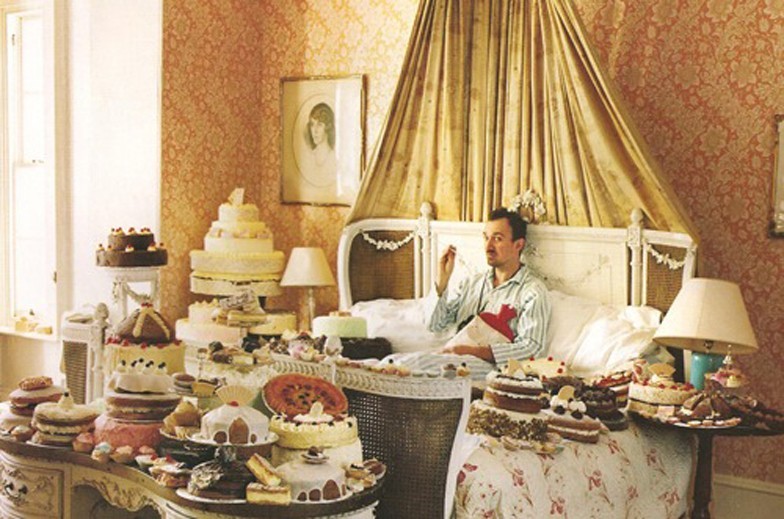Steven Meisel
Steven Meisel is an experienced and talented vogue photographer who has performed counties projects for global brands such as Tom Ford, Calvin Klein, Dolce and Gabbana, Prada, Louis Vuitton and many more.
I felt that Meisel was a good photographer to continue looking at for the continuous theme of identity. Following my story of who we want to be. The very idea of a model can speak to many as desirable and perfection in society. As well as an acute sense to the latest fashion. My idea was to approach with a similar response elaborating my subjects figure in order to fit their desires and innermost needs. I want to do this because it ties in nicely with my story and it plays upon the wants, painting a mental picture of the individual and an insight to their thought process.
STEVEN MIESEL, JULY 2000. STEVEN MEISEL,JULY 2014.
 |
| VOGUE ITALIA, BY STEVEN MEISEL JAN 2016. |
 |
| AGYNESS DEYN VOGUE ITALIA BY STEVEN MEISEL, NOV 2006. |
In this photoshoot I wanted to explore the styles of Steven Meisel and incorporate it into my own portraits. I identified that Meisel chooses subjects with prominent facial features, and that he is best known to often choose professional models who would considered desirable in looks by mainstream society. I also observed that he rarely shows the subject plainly, instead Meisel uses story telling techniques within his photographs. I was specifically inspired by his portfolio 'Makeover madness.' Which shows the transformation of each subject through the makeover process.
MY RESPONSE
I experimented with varying the amount and direction of the light that would fall upon my subject, using a light-box and artificial lighting. Shot using my macro lens, 24mm prime lens and 18-55mm IS lens, which achieved a range of close ups and wide angles.
Overall this entire photoshoot was about 300 images and consisted of three different parts. Such a large photoshoot gave me time and creativity to come up with different features that could be applied to the subject. I was fond of how eventually my housemate, Dan. Began to absorb this role I presented immersing himself creating a visually mental understanding of Dan's nature.
MY FINAL CHOICE
I chose these images as part of my final selection because I felt that they produced the idea of who we want to be really well. The subject wore a fur blanket and much like a crown is often associated with wealth. This object highlights my subjects desire to be wealthy and successful. The face paint was used to detach my subject from his original self, obscuring the face that he wears in his day to day life ,thus creating an alter ego. Similar facepaint designs and colours were used by ancient tribes in America to show strength and power - used on my subject to show his wanting to be respected by his peers and society.
I intended to follow a story throughout my project that would show my representation of ideas about 'who we are, what we do, who we want to be.' I am confident that this has been presented well and I achieved what I mostly intended. Through my research I have learnt that identity through portraits can have many forms, different ways of telling the story.Yet I believe that portraits are a form of identification.The frame may stay the same, but the subject of interest will change. This allows us to construct a photograph that has reflective meaning onto the observer. Observers are able to interpret the still actions of the subject within the frame and analyse the characteristics in these actions to build an emotional reaction to the image. Theses characteristics can be facial features,as in common with traditional portraiture or through body language.
My ability with macro lenses to explore unusual compositions and angles has enhanced my knowledge of photography. I've also learnt how to manipulate artificial and natural light to improve an image to greater effect.
Overall I am happy with the work I've produced, but their are certain areas of improvement that could be made. I didn't explore much traditional styles of portraits which I would like to do in the future. additionally I could've shot a wider range of subjects, specifically people I didn't know so well as apposed to my little sister or my housemate. This could've given me the opportunity to explore more observational portraits. I do believe my skills in creating an impressive professional image has improved over the course of these nine weeks. Although I will confess it was stressful not being able to use editing tools in post production. I feel a sense of achievement in producing a raw image with only lighting, composition, exposure and much more at my disposal for which I am pleased.
However I cannot resist the urge to present my selected final few in a polished form of post production. However !! They are in no way or form part of my final piece but only a contributor!
BELOW ARE ALSO EDITED VERSIONS OF MY THREE PART PHOTOSHOOT THAT I CHOSE TO LEAVE ASIDE. HOWEVER IN DEDICATION TO THEM I ADDED A SELECT FEW IN EDITED FORM. ENJOY.

BIBLIOGRAPHY
STEVEN MEISEL JULY 2000 -
http://agonistica.com/wp-content/uploads/2012/12/53.jpeg
STEVEN MEISEL JULY 2014 -
http://eclectix.com/wp-content/uploads/2014/07/steven-meisel-stylist-camilla-nickerson.jpeg
AGYNESS DEYN VOGUE ITALIA, NOV 2006 -
https://pleasurephoto.wordpress.com/category/agyness-deyn/page/4/
VOGUE ITALIA BY STEVEN MEISEL, JAN 2016 -
https://uk.pinterest.com/pin/563161128385567285/




































